Games That Should Be Remade, Volume IV
We take a look at ten obscure games from our past that ought to get remade today in the fourth edition of this recurring feature.
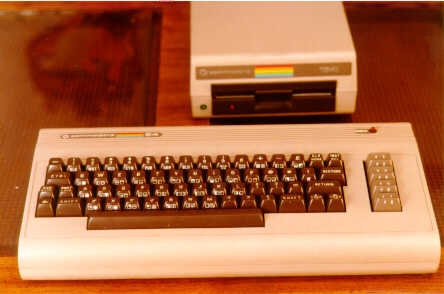
The last three times we've assembled the Games That Should Be Remade feature, we've generally picked games that may have been forgotten but were at least pretty well known in their day. After all, that's usually what inspires a remake, right? You need to have an old favorite that a lot of people loved back in the day, because instant name recognition means a foot in the door with lots of consumers. Gamers get excited every time they hear a familiar name, like Final Fantasy or Metal Gear, so remakes of hugely popular games of the past are about as close to a sure thing as you can get.
Well, we decided that this time around we were going to plumb the depths of gaming history to come up with some lesser-known games that we loved, games that maybe aren't the ones you first think of when you think of classic gaming. If you're fairly new to gaming, some of these games might appear on platforms that you've never seen in person (or, dare we say, even heard of), but rest assured that they influenced our formative gaming years in a positive way, and we'd love to see them come around again.
As always, you can send us your comments, questions, hopes, and dreams by
Bio Motor Unitron
System: NeoGeo Pocket ColorReleased: 1999
There's a strong possibility you've never played or heard of Bio Motor Unitron. Though it was an exceptional game, it had the poor luck of being released on the profoundly underappreciated NeoGeo Pocket Color in 1999, and in fairly limited numbers at that, making its potential audience a small one. Those willing to give Bio Motor Unitron a chance, though, were treated to a well-crafted game that is nearly the corporeal equivalent of the phrase "easy to pick up, hard to put down."

To call Bio Motor Unitron "Pokémon with robots" would be a fairly accurate way of describing the game if you were in a hurry, but it would also be selling the game short. The game puts you in control of a giant robot, or Unitron, that you use to fight against monsters and other Unitrons. It had a lot of standard 16-bit RPG trappings--randomly generated dungeons, random encounters, menu-driven, turn-based combat, and some basic character-building stuff. All pretty standard, but all executed rather well.
What made Bio Motor Unitron really sparkle were the game's engineering elements. There were dozens of different parts you could buy or find for your Unitron, but you got the best stuff by building it yourself. The process of developing new gear was less of a science and more like alchemy. If your combination wasn't just right, you'd end up with gear that wasn't very powerful or that simply didn't work at all. But the promise of discovering rare, ultrapowerful components made the whole process deliciously addictive and made the game more than just a Pokémon knockoff.
Though you could do a lot with a modern remake of Bio Motor Unitron--ditch the RPG stuff for more twitch-based action or render it in 3D--such changes to the game's fundamentals wouldn't do the original justice. Bio Motor Unitron started on a portable system, and a remake would be best served on a portable console like the Game Boy Advance, where 2D graphics are still viable. It could still use a new coat of paint though. More-colorful, dynamic animation sequences, such as those found in Intelligent Systems' superb Fire Emblem or its even more superb Advance Wars games, would make the combat far more entertaining to watch. The core gameplay wouldn't really need to be modified much to make it modern, but it could benefit from a larger scope and a more fully developed story--perhaps something on more of a grand Final Fantasy level, thusly giving your actions more weight.
Bio Motor Unitron deserves a remake not because the original was fundamentally flawed, but because it didn't get the chance it deserved. Simply cleaning it up a bit and presenting it on a platform where a reasonable number of people could be exposed to it would be exactly the kind of chance it should have gotten in the first place.
J.B. Harold Murder Club
System: TurboGrafx-16 CDReleased: 1991
J.B. Harold Murder Club stands as one of the most difficult games ever made. Released for the at-the-time revolutionary TurboGrafx-16 CD system, this hard-boiled detective story was played by few gamers and had its mysteries solved by even fewer. The game certainly wasn't graphically impressive, and its release on CD-ROM merely served as a vehicle to produce great audio and deliver some of the most memorable voice acting of all time. Why does this extremely obscure game deserve to be resurrected from its grave? Simply put, to this day there isn't much out there quite like it.
As the name implies, you play the role of a young detective by the name of J.B. Harold, out to solve the murder of a man by the name of Bill Robbins. The case will get you involved with a cast of nearly a dozen suspects, as well as numerous characters and locations all over town. By gathering evidence and clues, you'll slowly unravel the twisted tale that led up to the death of Bill Robbins. Much like a traditional point-and-click adventure game, J.B. Harold Murder Club placed all of its emphasis on story, and the key to getting anywhere in the game was using your skill as a detective rather than lightning-quick reflexes to get to the bottom of the case.
Sure, it's been said repeatedly that the adventure genre is dead, at least in the commercial aspect. Konami's Shadow of Destiny and the epic tale of Shenmue both came close to letting you relive the intrigue of solving a murder, but neither of these games dealt with anything more than the case at hand, which is precisely why another chapter in the life of J.B. Harold would be so great. While Shadow of Destiny brought time travel into the fold and Shenmue tried to be too many different games at once, a J.B. Harold Murder Club of today would probably follow a formula that closely resembles that of Knights of the Old Republic. Both games feature character interaction as the major gameplay element and even have a similar type of multiple phrase response. Whatever it looked like, just so long as it had the cool, jazzy feel of the original, a new J.B. Harold Murder Club would certainly garner more attention than the first one ever did.
Raid on Bungeling Bay
System: Commodore 64Released: 1984
1984 was the year of the helicopter. Airwolf and Blue Thunder (based on the 1983 Roy Scheider movie) debuted on network television that year, and Broderbund published Raid on Bungeling Bay for the Commodore 64. Of the three, the venerably cheesy Airwolf lasted a couple of seasons, and Blue Thunder didn't even last half of one. It is therefore Raid on Bungeling Bay that remains fresh in our memories.

Raid has a storyline that remains eerily relevant to this day: A rogue nation is building weapons that it shouldn't, so you and your high-tech attack helicopter are sent in to destroy their factories before it's too late. The game is played from a top-down view; you take off from your carrier, zoom in fast over the city shooting everything in your way, then come to a crash halt over the target. There are six factories to destroy, and the game gets progressively harder each time you take one out. The action quickly becomes frantic--jet fighters come after you, bombers hunt your carrier, and antiaircraft missiles corkscrew everywhere. And, to top it all off, eventually the enemy will finish construction on its superbattleship, and when it does, you've got to destroy it before it can sink your carrier.
Like in many great games, it's the little things that help to define Raid as a classic. The flight model is well realized for such an early action-arcade game; you can slip and slide around in the air, and you've got to be careful of your momentum so you don't overshoot your target. If you take damage, you have to limp back to your carrier for repairs, a nerve-racking journey as fighters swarm all over you like wolves moving in for the kill. If you need more time, you can delay completion of the battleship by dropping leftover bombs on its construction site. If enemy fighters become too much, you can stalk their runways and nail them when they land to refuel. And, if nothing else, part of the fun is exploring the city and realizing that it's made up of distinct neighborhoods. It's little wonder that creator Will Wright would later go on to make SimCity.

Almost 20 years have passed since Raid, and the closest we've had to a remake are the Strike helicopter games from Electronic Arts. Yet the Strike titles are too arcadelike and linear compared to the free-form gameplay of Raid. They also lack the sense of speed and chaos; there's nothing quite like getting caught up in a dogfight with no fewer than three fighters when you're desperately trying to save your carrier from a bomber attack. For a remake, it might be interesting to change the view from top-down to first-person but without turning it into a complex flight simulator. But a cockpit view would allow for quite a rush as you skimmed low over the streets and buildings of Bungeling Bay, ready to enforce the new world order once more.
ESWAT Cyber Police
Platform: ArcadeReleased: 1989
No, it's not an online service for pest control. ESWAT is Sega's 1989 tribute to the movie Robocop, and it's the closest anyone has ever come to making a truly great law enforcement action game in which you play as a cyborg, because we all know that's where the future of law enforcement is headed. Why so few games to date have attempted this concept and why so few of these games to date have achieved any degree of success is anyone's guess. It doesn't change the simple fact of the matter, though: We want a remake of ESWAT.

ESWAT hearkens back to the good old days of gaming in which you shot first and asked questions later. A one- or two-player game, ESWAT puts you and a friend into various side-scrolling stages in which the object is to kill all the bad guys while attempting to reach the end of the level. You start off the scenarios as a flesh-and-blood cop, but by picking up certain power-ups, you harness the power of the ESWAT armor, which allows you to mow down enemies and sustain punishment like nobody's business. ESWAT was originally released in arcades but was then ported to various other platforms, namely the Sega Genesis. The translations were all a bit different, but they kept the cyborg cop theme intact.
Honestly, ESWAT wasn't all that special of a game. It was a good, solid side-scrolling shooter that made you worry about your ammo supply and gave the thrill of switching between being a wimpy, regular old cop and being an overpowered Robocop wannabe. But there were a lot of other, similar games at the time. What makes ESWAT memorable is its concept. Most games revolve around killing bad guys, but ESWAT was especially pure and straightforward about it.
And we do, in fact, believe that this concept could legitimately make for an exciting new game.
By now there are a ton of real-world squad-based shooters, most notably games like Tom Clancy's Rainbow Six 3 and SOCOM II: U.S. Navy SEALs. Combine the relatively realistic law enforcement/antiterrorist gameplay of those games with the ability to use a giant honking robot suit, and you've got grade-A gaming entertainment.
ESWAT also hearkens back to an era in which cooperative multiplayer gaming was much more common than competitive play. This was no accident; co-op gaming can be a lot of fun, and we wish more games these days featured levels and campaigns that we could play through with our friends. Co-op play is especially interesting when new, two-player game mechanics are introduced into the mix, and here, our imaginary new ESWAT game could also excel. Real cops work in pairs, and this new ESWAT could take full advantage of such a two-player dynamic.
Above all, though, we're really itching for a good cyborg cop game right about now, and we can think of nothing better than a remake of ESWAT to scratch that itch.
Thanks to The Killer List of Video Games for the screen shots.
Roadwar 2000
Systems: Apple II, Atari ST, Amiga, PCReleased: 1986
If you ask someone to name a postapocalyptic role-playing game from the 1980s, nine times out of 10 the answer will be "Wasteland." While there's no denying that the Interplay RPG is a classic, standing in its long shadow is SSI's Roadwar 2000, another innovative adventure set in the ruins of American civilization.

On the surface, Roadwar 2000's premise is similar to that of Wasteland. After a cataclysmic epidemic and subsequent sneak nuclear attack by those pesky Russkies, the United States has descended into anarchy. Cities are controlled by ruthless gangs, while the countryside is rife with cannibals and mutants. The remnants of the federal government are working on a cure for the epidemic and need to locate eight scientists hiding in secret labs scattered across the country.
While Wasteland followed the traditional RPG model, Roadwar 2000 combined elements of role-playing with tactical car combat and resource-management strategy. Instead of leading a party of six to eight characters, you assumed the role of a gang leader hired by the government to find the scientists. You had to assemble enough men and capture enough vehicles so you could take on the gangs controlling various cities where the labs were located.
In a realistic touch, you had to gather food and fuel to support your ever-expanding posse, which included several classes of specialists, including politicians (to help recruit members) and drill sergeants (to whip them into fighting form). Also, each city you visited and/or conquered had its own personality--the men's morale was raised when they let the bon temps roulez in New Orleans, but they tended to get drunk and wander off when visiting Napa's wine country.
Roadwar 2000's combat was settled on the streets, with cars ramming each other, Mad Max-style. But unlike in 1985's Autoduel, the combat was turn-based, which made the game seem like a primitive version of Fallout Tactics. Indeed, a Tactics-like game would be one approach for a Roadwar remake, with cars taking the place of humans.
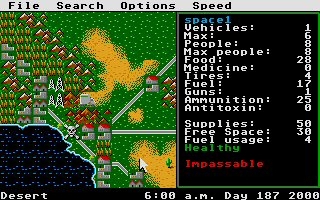
However, a true Roadwar 2000 redux--let's call it Roadwar 2072--would embrace its strategic, tactical, and role-playing elements. The RPG element would be like Fallout, with the majority of the gang camping outside the various towns, while a smaller party would go into town to complete side quests in exchange for resources and recruits. When the time came to take on the local gang, combat would take place in a real-time strategy format. The result would look like Command & Conquer: Generals being fought by the cast of The Road Warrior--except this time around, you could be the Lord Humungous.
Soldiers of Anarchy showed that the postapocalyptic RTS is a genre rife with possibilities. Like the underappreciated Silverstyle game, Roadwar 2072 would reward victories by giving you more vehicles and weapons as well as more manpower and prestige. However, the strength of the gangs guarding each city would be commensurate with their size. The game could culminate in a battle royal for Manhattan, which could be guarded by a bloodthirsty horde right out of Escape From New York, or for Los Angeles, which could harbor a massive army of Bloods and Crips equipped with surplus military hardware. Such a remake of Roadwar 2000 would deliver exciting gameplay far into the future, or at least until the apocalypse comes.
Action Fighter
System: Sega Master SystemReleased: 1986
Action Fighter is a fairly little-known game that was released for the Sega Master System back in 1986. The design document for the game must have been a pretty simple one. It probably just said, "Hey, remember how cool that arcade game Spy Hunter was? Let's make a game just like it, only significantly cooler."
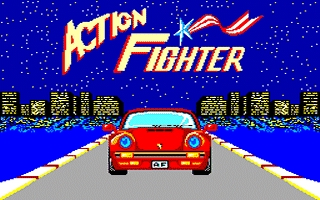
Action Fighter was a driving action game that put you into a transforming vehicle and asked you to shoot up any cars that got in your way. Spy Hunter's vehicle transformed too, but it only went from a car to a speedboat and back again. In Action Fighter, you started the game on a highly vulnerable motorcycle and then collected power-ups to turn it into a car. Once you were in car form, you could collect two more icons and earn your wings. Once you transformed the car into a flying car, the game carried on a bit like Namco's classic arcade shooter Xevious, giving you the ability to shoot straight ahead or drop bombs on ground targets. Rounding the whole thing out, the game had some pretty decent boss battles at the end of each level, putting you up against a series of submarines in one level and other collections of big vehicles throughout the game.
If Spy Hunter can be remade into a moderately successful mission-based shooter, then we say there's no reason why Sega can't follow suit and bring its little-known clone into the 21st century in a similar fashion. The dynamic of changing your ground-based vehicle into a flying car is definitely a cool one that would probably lend itself well to a modern mission-based shooting game.
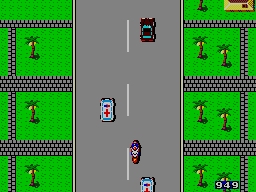
But let's not abandon the idea of 2D gaming in favor of making a game that basically apes Midway's Spy Hunter remakes. Besides, Spy Hunter 2 added boss fights--which was one of Action Fighter's advantages over the Spy Hunter arcade game in the first place--when it was released on the Xbox and PlayStation 2 last year. What would really be best for Action Fighter at this point would be either an updated remake in the Sega Ages line of classic rereleases or an entirely new game on a handheld platform like the good ol' Game Boy Advance. The driving and shooting action would fit quite well on a GBA these days, and the level-based design of the original would make for an easy password or save-game structure for playing on the go. We like Action Fighter, but we don't necessarily want to hook up a Master System just to play it.
Splatterhouse
System: Arcade, TurboGrafx-16Released: 1990

Here in 2004, excessively violent video games are nothing new. In the last dozen years we've been through senate hearings on digital decapitations and protests against sadistic, trigger-happy mob games, so frankly, gamers have gotten a little desensitized to game gore. But back in 1990, in the waning days of the NES' reign and the kid-friendly era of Mario and Pac-Man, a game like Splatterhouse was pretty darn eye-catching. This was a game that wasn't afraid to spill a little blood; in fact, it wallowed in buckets of the stuff. As kids, we were of course fascinated with the gruesome spectacle of the game's grisly levels. It's safe to say that Splatterhouse was one of the very first games to use its shock value as a major selling point, and that really makes it stick out in our minds.
Honestly, the gameplay is only half of what made Splatterhouse great. You took control of a hapless college student named Rick who was sucked into a demented mansion along with his girlfriend, Jennifer. After Jennifer was kidnapped and Rick was forced to wear a bizarre hockey mask (called the "terror mask"), you were tasked with--surprise--rescuing your girlfriend and surviving to see the dawn. The game itself was simple: You walked ever to the right while punching, kicking, stabbing, bludgeoning, and shooting every vile hellspawn that crossed your path. There was a fair amount of variety in the weapons, but really the gameplay in Splatterhouse could have been called a bit repetitive. Could have, we say, because the endless parade of slimy, foul, god-awful creations that the game threw at you kept things morbidly entertaining. You always wanted to press on to see what the next unholy boss would look like, whether it would be eating its own entrails or flinging pieces of rotten flesh at you or spawning maggot-eaten giant slugs to consume you. Definitely a game to show your parents, this one.
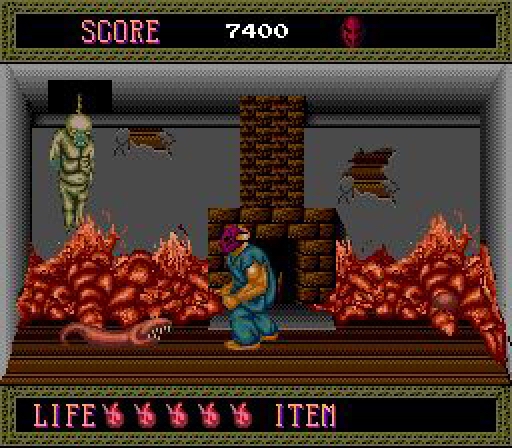
If a new Splatterhouse were to be made today, there's no doubt it would take full advantage of the third dimension, 2D games having gone the way of the dodo. If the game appeared on capable hardware like the Xbox or even the immensely powerful PC, perhaps using--dare we say it--the Doom 3 engine, the developers could put some serious detail work into crafting the darkest, dankest, most disgusting environments and enemies ever seen in a video game. The biggest strength of a new Splatterhouse game wouldn't be its beat-up-zombies gameplay (though that's fun in itself); it would be the creepy, disturbing atmosphere that talented art direction could create with today's potent game hardware.
And perhaps all this is more than wishful thinking, as the rumor mill has in fact been churning for a little while now about the possibility of Namco reviving the Splatterhouse name for one more gory go, maybe even this year. So stay tuned, boys and ghouls. (Sorry, we couldn't resist.)
Champions Forever Boxing
System: TurboGrafx-16Released: 1991
To the casual observer, Champions Forever Boxing may look like a simple boxing game from the days of pixilated sprites and two-button controllers. While this may be an accurate first impression of the game, longtime video game boxing fans know that Champions Forever Boxing is to this day one of the very best games of its kind.
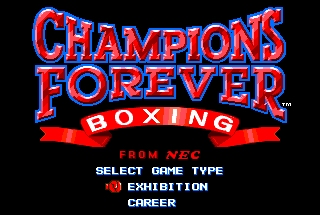
Sure, we've had innovative boxing games like Ready 2 Rumble, Knockout Kings, and even Victorious Boxers, but so far no game has been able to pull as many pieces of the boxing game puzzle together as Champions Forever. The highlight of the game was its career mode, which allowed you to take a no-name fighter from obscurity to the top of the heavyweight division. Along the way you actually earned money--not points, not something like money, but millions of dollars. The creators of Champions Forever Boxing were actually able to create tension with the fact that huge amounts of money were on the line, not to mention your reputation and record.
Every time you loaded your career, a bar graph displayed how long you had been fighting, your win/loss record, and your career winnings. While most of this may sound like it should be typical for a boxing game, you'd be surprised by how most boxing games focus on getting to the championship fight and ignore the rest of your career. Not Champions Forever. Once you won the championship in Champions Forever, it was all about seeing how long you could reign as the heavyweight champ--not because the opponents got harder over the years, but because your fighter's abilities deteriorated with time. In fact, after really tough bouts your fighter's attributes would be a bit weaker than before the fight began. This risk-versus-reward system made it important to always keep your fighter in good health.
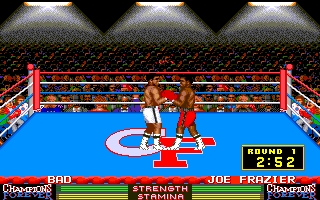
The game featured some of the very best heavyweights of all time, such as Muhammad Ali, George Foreman, Ken Norton Jr., and Joe Frazier. But really, it was the great and simple gameplay in Champions Forever Boxing that was ultimately what kept the few boxing fans that actually played it coming back for more. The game even had analog punching controls that allowed you to decide how far or fast a punch was thrown. Champions Forever Boxing was certainly ahead of its time, which is why we picked it as a game we'd like to see be remade. No one has been able to put together as solid a career mode system in a boxing game as Distinctive Software did way back in 1991.
StarTropics
System: NESReleased: 1990
When StarTropics was released for the NES way back in 1990, most gamers had already begun dreaming about the soon-to-be-released Super NES and let this gem of a game go nearly unnoticed. A sequel to the game, StarTropics 2: Zoda's Revenge, was also released, but even fewer gamers will remember this game. As the NES slowly became a memory, so did StarTropics. Not even the holy grail of Nintendo fan service, Super Smash Bros. Melee, made mention of either of the games in its extensive trophy collection. Forgotten it may be, but StarTropics is still an incredible game, sorely deserving of some sort of revival.
The game follows the story of Mike, an ace little league pitcher who travels to the far-off island of Coralcola to visit his uncle, Dr. Jones. Upon his arrival, he learns that his uncle has been abducted, and it's up to Mike alone to save him. While the story is far from original, the script is peppered with clever writing that makes an otherwise boring and derivative storyline interesting. The gameplay, on the other hand, truly makes StarTropics the great game that it is, with its equal parts RPG and action adventure. Mike starts off every section of the game by exploring his surroundings, further unraveling the mystery of his uncle's disappearance, and then descending into a dungeon to wield his mighty yo-yo. Here he'll face many enemies, clearing room after room and solving numerous brain-bending puzzles. The game certainly borrows heavily from many different games, but it brings them all together into one endearing package -- one that is certainly worthy of being updated and brought back to a new generation of gamers.

It's common knowledge that Nintendo rarely abandons one of its properties outright. So why has StarTropics become little more than a fond memory for aging gamers? Perhaps it's because the game was released so late in the NES' life span that it simply was never able to get the attention that it fully deserved. If that's the case, reintroducing the game would add yet another seemingly new character to Nintendo's huge pool of talent. Imagine, if you will, a game very similar to The Legend of Zelda: The Wind Waker, except instead of a talking boat, you've got a submarine. Replace the boomerang with a yo-yo, toss out Link and put Mike in his place, and you've practically got a brand-new game. If you've ever had the chance to play StarTropics, you'd certainly agree that the way it culled the best parts of different genres really made it memorable. With all of the incredible advancements that have been made to gaming as a whole since the original StarTropics was released, a new StarTropics would truly have the potential to be another memorable game.
Xenophobe
System: ArcadeReleased: 1987
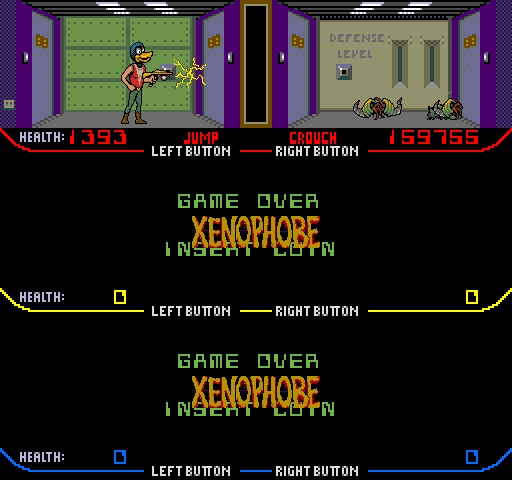
Humanoids versus aliens. It's a concept as old as time itself. OK, well, maybe it's not that old. But it's one that's usually done in a pretty standard way. The aliens are evil, the protagonists are some sort of generic space-marine military faction, and so on. Midway's Xenophobe, released in 1987, starts in familiar territory--acid-spitting aliens have taken over a number of space stations and moonbases, and it's up to you to stop them by any means necessary--but it takes itself less seriously than the average alien shoot-'em-up. Xenophobe was a lighthearted and memorable arcade game that made its way home in a variety of forms, but none really captured the true essence--or maddening difficulty--of the original. Since alien shooting games being released these days take themselves too seriously, we'd like to see a new sequel or remake bearing the Xenophobe name and carrying the Xenophobe spirit.
The first clue that Xenophobe wasn't exactly the dark, brooding, Giger-inspired sci-fi shooter that you'd expect was in its character lineup. Among a variety of human-looking figures, you'd also find alien-headed characters, a man that looked suspiciously like a Vulcan, and a humanoid with the head of a duck. Needless to say, we always chose the duck guy.

While the cast of characters and the expressive, cartoony art style certainly didn't hurt, what really gave Xenophobe its appeal was its cooperative play. The game supported up to three players via a horizontally split screen, and playing together was really the only viable way to fight off the alien horde that came at you in each and every level. Going at it alone was essentially a one-way ticket to "insert-coin-to-continue-ville," because the aliens would chew through your thousand health points pretty quickly. This cooperative aspect, combined with the challenge of fighting off the massive infestation on each level, gave the game a feel similar to Atari's classic co-op game Gauntlet, though, of course, Xenophobe was played from a side-scrolling perspective.
Alien shooting action has been done a billion different ways since Xenophobe's initial release, so a lot of different design choices are available for a potential remake. It would probably make a pretty great third-person shooter, because a first-person shooter wouldn't give you enough of the characters' personality. Give it a wider scope, some new alien beasties to blast through, and online co-op play with headset support, and you've got a winner in our book.
Got a news tip or want to contact us directly? Email news@gamespot.com
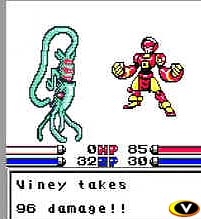
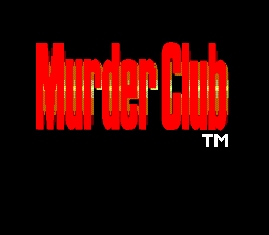



Join the conversation